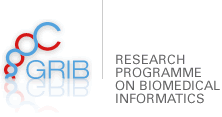
Thursday, 22th March, 2012, 11:00
How do antimicrobial peptides really work? Adventures in NMR of whole bacteria
The mechanisms that antimicrobial peptides (AMPs) use to disrupt membranes have been studied extensively using NMR and other
biophysical techniques. However, such studies have generally been limited to model lipid systems. In real life, antimicrobial peptides interact with a much more complex environment that includes membrane proteins, a peptidoglycan layer, lipopolysaccharide, lipid domains, etc. One way to illustrate the impact of this complexity is to consider the difference in peptide:lipid molar (P:L) ratios between the conditions under which the biological activity of AMPs is observed and the conditions under which NMR studies of mechanism are conducted. Solid-state NMR and other biophysical studies of model systems can typically show AMP-induced changes at peptide:lipid ratios close to 1:100. Strikingly, however, a ratio of 100 bacterially bound peptides per lipid is needed to see inhibition in an Escherichia coli sterilization assay, i.e., 10000 times more peptide per lipid. In order to bridge this enormous gap, we have designed a procedure to incorporate high levels of 2H NMR labels specifically into the cell membrane of Escherichia coli and used this approach to study the interactions between the AMP MSI-78 and the membranes of intact bacteria. I will present the highlights from these whole-cell studies along with results from solution NMR structural studies, as well as molecular dynamics simulations starting from unassembled bilayers.
Speaker: Valerie Booth- Department of Biochemistry and Department of Physics and Physical Oceanography, Memorial University of Newfoundland, Canada
Room Xipre (seminar 173.06-183.01)


